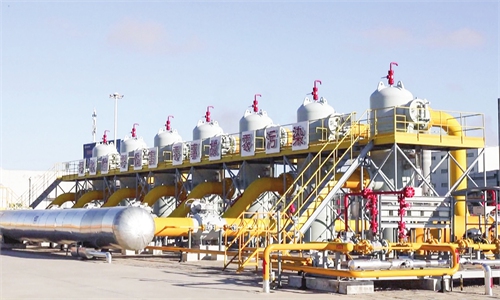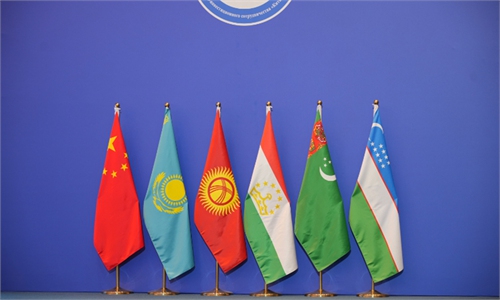IN-DEPTH / IN-DEPTH
Xi's footprints in Central Asian countries consolidate ties, vitalize Silk Road
Crafting a New Blueprint
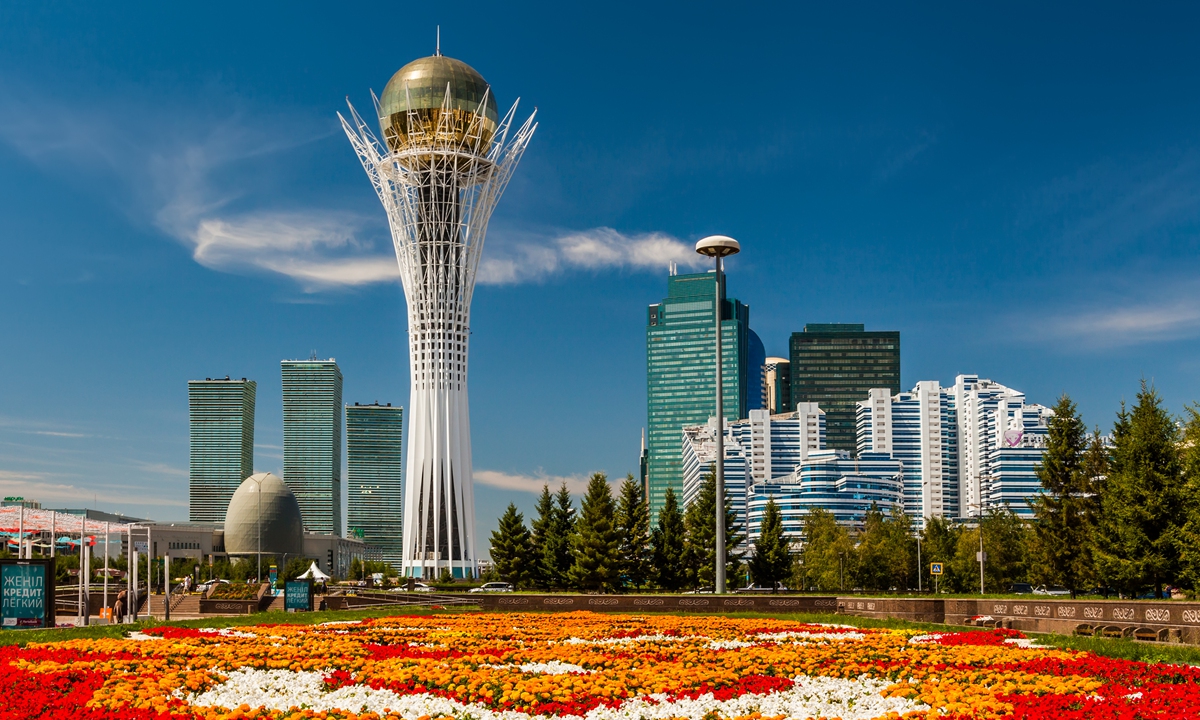
Baiterek Tower, a landmark tourist site of Nur-Sultan, Kazakhstan. Photo:VCG
Xi'an, the starting point of the ancient Silk Road, is about to witness the ancient route shine with new vitality as the high-level China-Central Asia Summit is being held from Thursday to Friday. The national flags of China and five Central Asian countries are being flown alongside the airport highway in intervals, and banners saying "build a closer China-Central Asia community with a shared future" in both Chinese and Russian, can be seen at overpasses in the city.
The summit is the first major diplomatic event to be hosted by China this year, and also the first summit to be held offline by the heads of state of China and the five Central Asian countries in attendance since the establishment of diplomatic ties 31 years ago.
The presidents of five Central Asian countries have all arrived in Xi'an, Northwest China's Shaanxi Province, to attend the summit.
Kazakh President Kassym-Jomart Tokayev, Tajik President Emomali Rahmon, and Kyrgyz President Sadyr Japarov arrived on Wednesday. Uzbek President Shavkat Mirziyoyev and Turkmen President Serdar Berdimuhamedov arrived on Thursday.
At the summit, President Xi Jinping is scheduled to deliver a keynote speech, expounding on China's stance on how to construct a China-Central Asia community of shared future, while eyeing long-term development for cooperation between the six countries, putting forward a series of propositions, and announcing multiple pragmatic measures and actions, Chinese officials revealed at a Tuesday conference.
Over the last decade, President Xi has maintained close interactions with leaders from Central Asian countries, and such frequent connections has enhanced mutual trust between China and the five countries, upgraded cooperation, and led to a deeper, more pragmatic cooperation between China and said countries, said experts.
They hailed that the summit will not only witness China and Central Asian cooperation making new breakthroughs, and ushering in a new chapter of bilateral ties among the six countries, but will also demonstrate the closeness of relations between China and those Central Asian countries, which pivot around win-win results, mutual respect, and trust, and set a model for international relations amid a complicated international atmosphere.

Kyrgyz National University in the capital of Kyrgyzstan. Photo: VCG
New cooperation opportunities
China shares a special bond with Central Asian countries. For his first foreign trip since the COVID-19 pandemic, President Xi paid a state visit to Uzbekistan in September 2022 and attended the 22nd meeting of the Council of Heads of State of the Shanghai Cooperation Organization (SCO). Moreover, this year also marks the 10th anniversary of the Silk Road Economic Belt initiative proposed by Xi during his visit to Kazakhstan in 2013.
In September 2013, during President Xi's visit to Kazakhstan, he delivered a speech of far-reaching significance at Nazarbayev University. In his address, Xi took his audience back to over 2,100 years ago when a Chinese envoy was sent to Central Asia on a mission of peace and friendship and opened a Silk Road that would then take Chinese silk, tea, and porcelain to other parts of the world and brought back spices, glassware, furs, fruits, and precious stones.
Xi's speech drew inspiration from the successful trade routes of the ancient Silk Road and proposed the idea of building an "economic belt along the Silk Road."
A month later, in Indonesia, Xi proposed the building of a 21st Century Maritime Silk Road, which, combined with the economic belt proposal, eventually became the Belt and Road Initiative (BRI).
As part of the BRI, several transnational roads, railways, and oil and gas pipelines have been constructed. During meetings with his Central Asian counterparts, Xi frequently highlighted the progress and future plans for BRI projects.
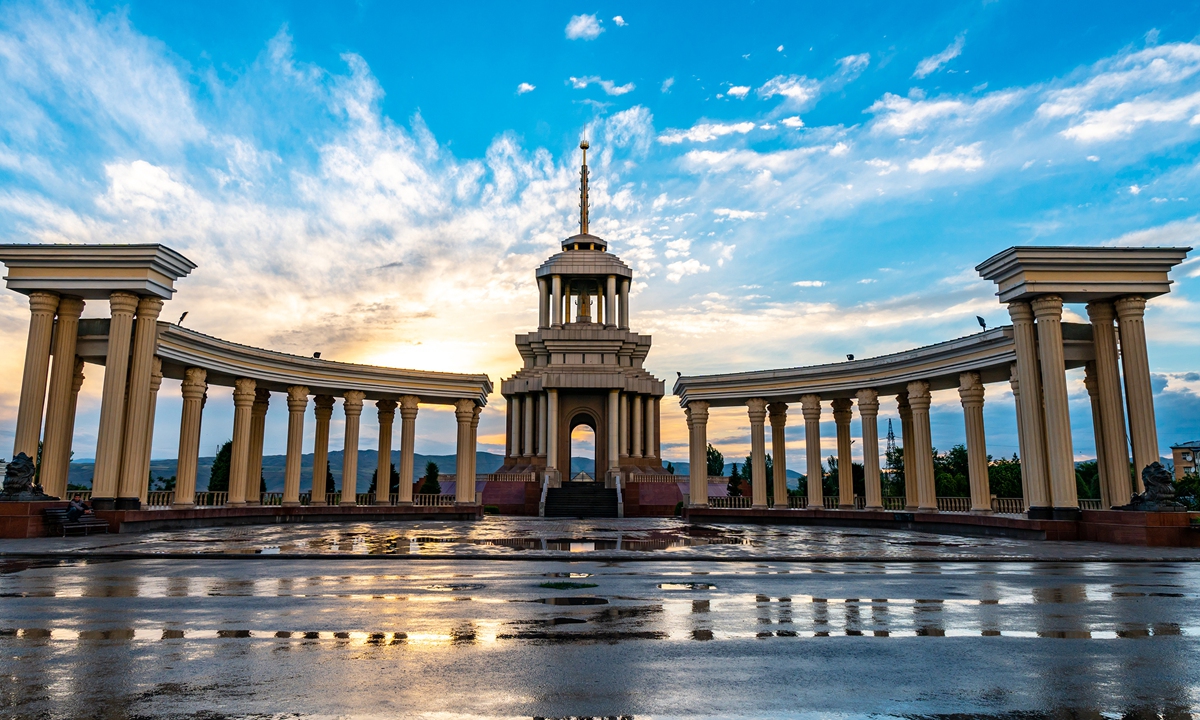
Kulob Castle Square in Tajikistan. Photo: IC
During Xi's visit to Central Asia in September 2022, a cooperation agreement was signed on the Kyrgyz section of the China-Kyrgyzstan-Uzbekistan railway, bringing this much-anticipated infrastructure project closer to fruition.
More than 20 bilateral and multilateral activities will be held during the two-day summit. At the summit, leaders will exchange their views on the establishment of mechanisms, cooperation, and international and regional issues of respective concern. The leaders of the six countries are expected to sign a slew of important political documents in areas such as the economy, trade, and connectivity, Yu Jun, deputy director-general of the Chinese Foreign Ministry's Department of European-Central Asian Affairs, said at a Tuesday press briefing.
"Central Asia's strategic importance has become more prominent as China has upped the construction of the BRI, and these countries are playing an increasingly important role in China's diplomatic strategy. Moreover, Central Asian countries are eager to cooperate with China to boost their long-term development," Li Yongquan, director of the Eurasian Social Development Research at the Development Research Center of the State Council, told the Global Times, noting that this summit will witness cooperation between China and Central Asian countries make new breakthroughs.
Shavkat Alimbekov, leading researcher at the International Institute for Central Asia - an organization established in Uzbekistan, told the Global Times that the China-Central Asia Summit will give new impetus to the high-quality construction of the Belt and Road. "One of the key aspects of this cooperation is the development of the 'Green Silk Road,' that is, the use of green development technologies, innovative solutions, and advanced technologies to achieve environmental efficiency and sustainability," said Alimbekov.
China has been the largest or main trading partner of Central Asian countries for many years. In 2022, the trade volume between China and Central Asian countries stood at over $70 billion, according to the Xinhua News Agency.
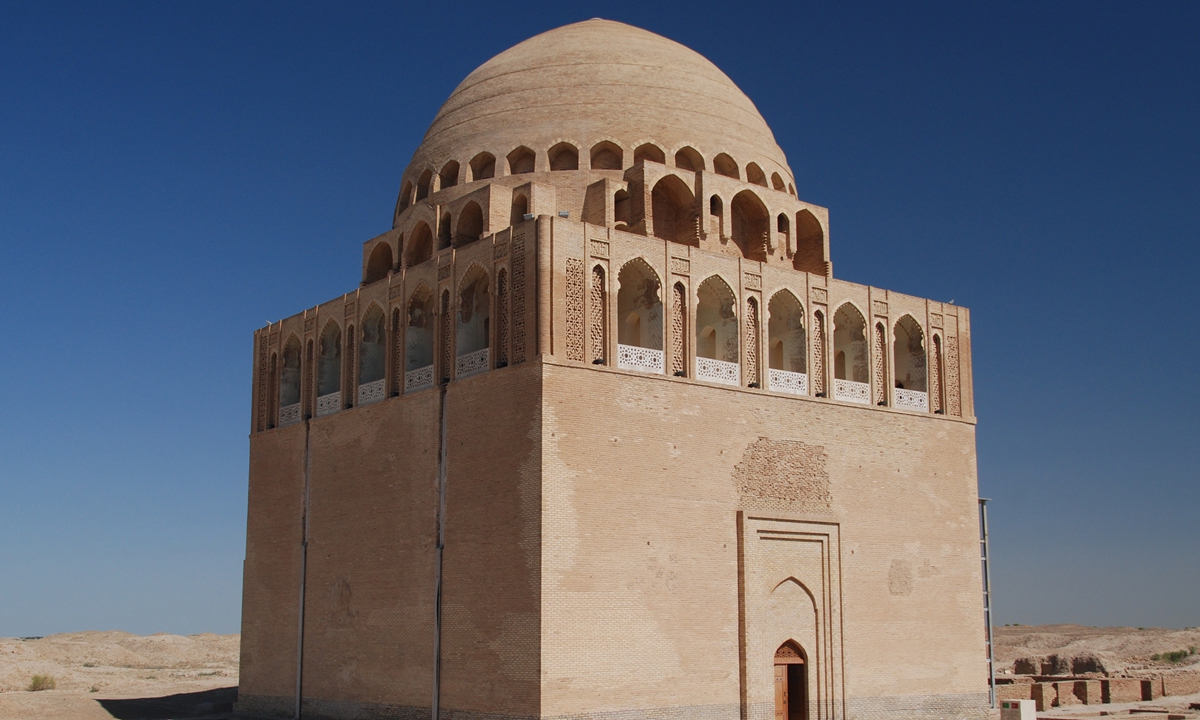
Mausoleum of Mauf Sultan Sanjar in Turkmenistan. Photo: VCG
Good-neighborly friendship
Speaking at the virtual summit to commentate the 30th anniversary of diplomatic relation between China and Central Asian countries, Xi said that we have established strategic partnerships, and deepened political trust and mutually beneficial cooperation, blazing a new trail of good-neighborly friendship and win-win cooperation, and setting a good example of fostering a new type of international relations.
During the speech in Kazakhstan in 2012, Xi said China respects the development path as well as the domestic and foreign policies Central Asian people have independently chosen for themselves. China will never intervene in the internal affairs of Central Asian countries, seek leadership in regional affairs, or operate a sphere of influence.
As China's ties with Central Asian countries tighten, so too are efforts by the US to engage with the region increasing.
Earlier this year, US Secretary of State Antony Blinken visited Central Asia and met with his counterparts in all five Central Asian countries. US officials have said that the Biden administration is seeking to step up engagement with the region, especially with countries facing a potential economic fallout from the conflict.
Observers debunked the US' sudden interest in the region, saying it wants to sow discord among China, Russia, and the five Central Asian countries, as well as to secure its own interests since Washington's influence in the region has waned after the US' hasty withdrawal from Afghanistan.
Compared with the US, whose diplomatic policy is centered around serving its own interests first, and is always keen to foment dissension, China's relationship with Central Asian countries is the paragon of healthy international relations, Li Yongquan, director of the Eurasian Social Development Research at the Development Research Center of the State Council, told the Global Times.
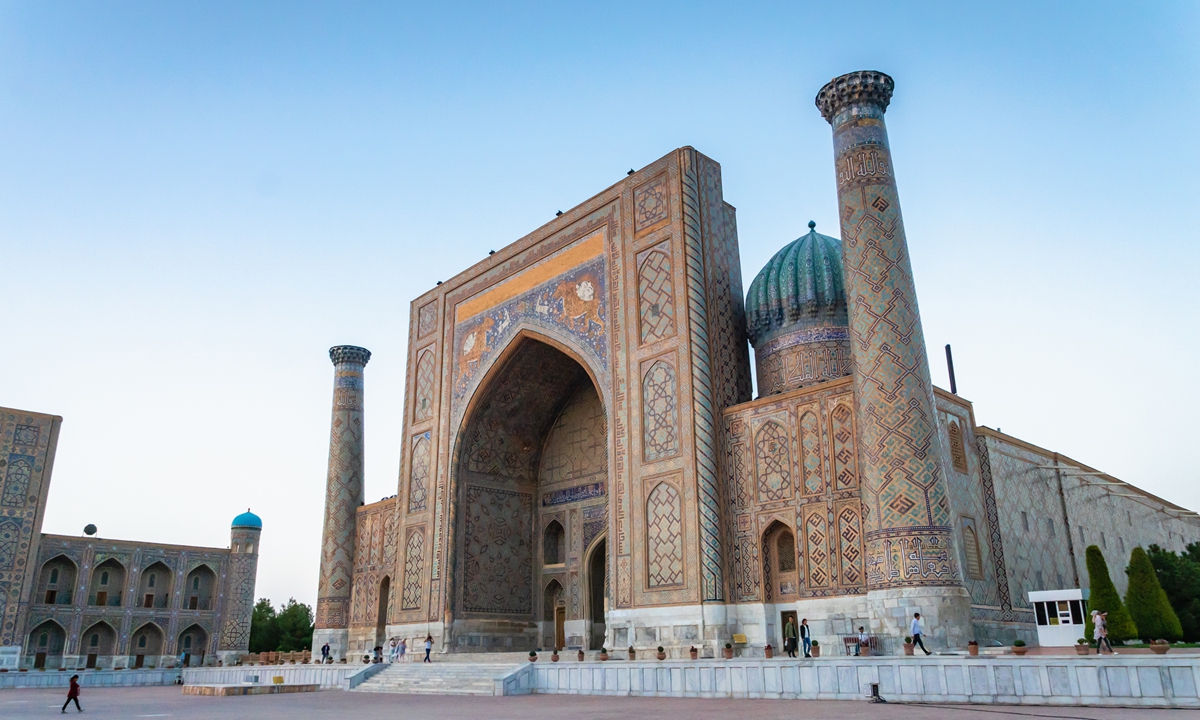
The famous Registan Square in Uzbekistan. Photo: VCG
China's cooperation with Central Asia does not target any third party and the China-Central Asia cooperation mechanism does not aim to compete with other mechanisms, said Yu. China supports anything that is truly beneficial for the region's development, and helps the common prosperity of the region, Yu noted.
When meeting with State Councilor and Foreign Minister Qin Gang in Xi'an in April, Kazakhstan's Deputy Prime Minister and Foreign Minister Murat Nurtleu said that the strategic partnership with China remains one of the priorities of Kazakhstan's foreign policy. Nurtleu highlighted the need for joint efforts to implement the agreements reached at the highest level to expand multifaceted cooperation between the two countries, particularly in trade and investment, the Astana Times reported.
Yang Jin, an associate research fellow at the Institute of Russian, Eastern European, and Central Asian Studies at the Chinese Academy of Social Sciences, said that previous cooperation between China and Central Asian countries was either bilateral; or under multilateral frameworks, such as the SCO. "Those forms of cooperation are based on win-win results and mutual trust, and are highly recognized by Central Asian countries. Thus this summit has come at a key juncture when China's ties with those countries are set to be elevated to a new high," said Yang.

